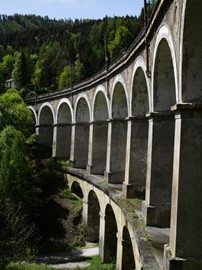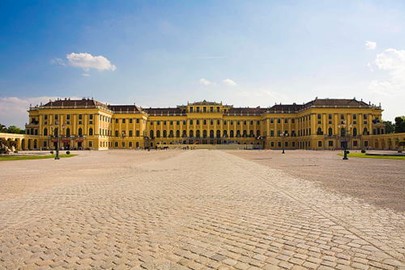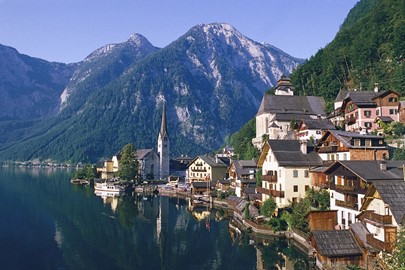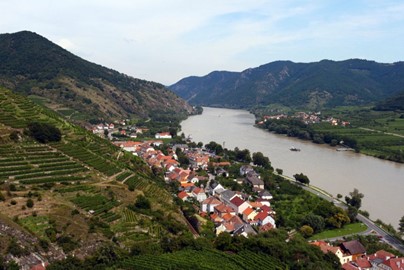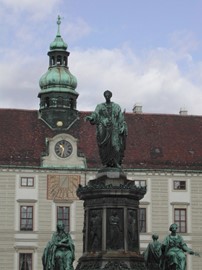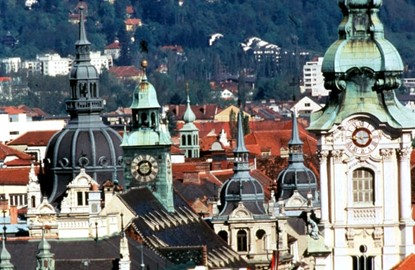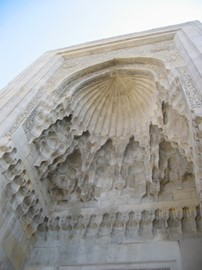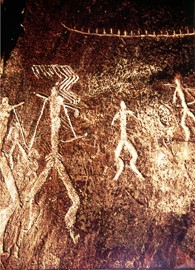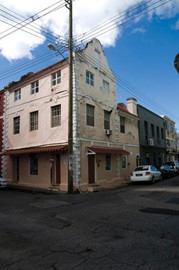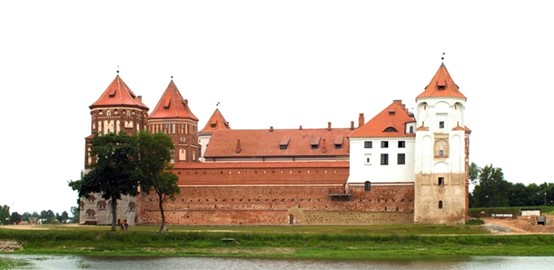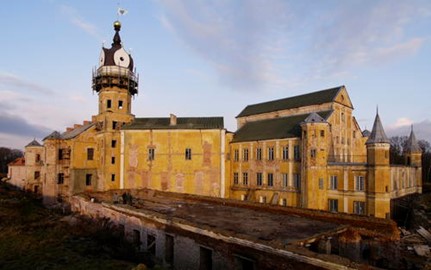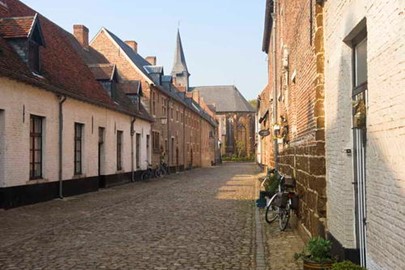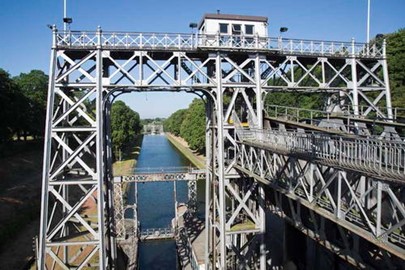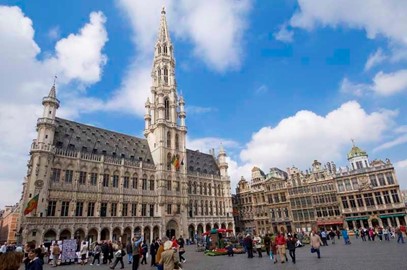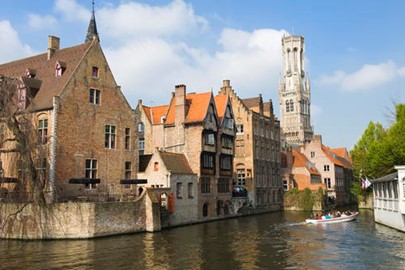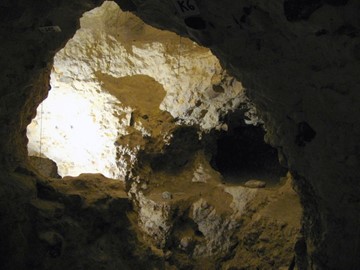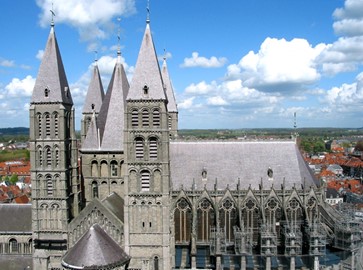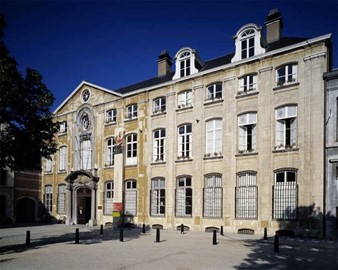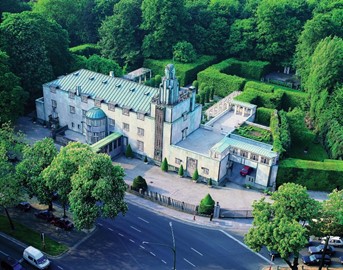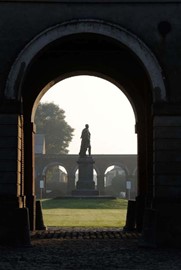category :: cultural
Semmering Railway
The Semmering Railway, a UNESCO World Heritage site in Austria, is a pioneering engineering marvel renowned for its scenic mountain route. Completed in 1854, this early railway weaves through rugged alpine terrain with viaducts, tunnels, and stone bridges, blending seamlessly into the landscape. Celebrated for its technical innovation and aesthetic harmony, it transformed travel and tourism in the 19th century. This historic rail line stands as a testament to human ingenuity and the beauty of Austria’s natu... Read More
Schonbrunn
The Palace and Gardens of Schönbrunn, a UNESCO World Heritage site in Austria, is a magnificent baroque ensemble celebrated for its architectural grandeur and historical significance. The opulent palace, once an imperial summer residence, features lavish interiors and sprawling gardens adorned with fountains, sculptures, and manicured hedges. Completed in the 18th century, it reflects the power and taste of the Habsburg dynasty. This iconic site blends regal elegance with landscaped beauty, offering a glimp... Read More
Hallstatt Dachstein and Salzkammergut
Hallstatt-Dachstein and Salzkammergut, a UNESCO World Heritage site in Austria, is a stunning alpine region famed for its picturesque landscapes and cultural heritage. Nestled between dramatic limestone peaks and serene lakes, its quaint villages boast ancient salt-mining traditions and charming wooden architecture. The rugged Dachstein Alps contrast with the tranquil beauty of the Salzkammergut lakes, creating a timeless vista. This harmonious blend of nature and human history makes it a cherished treasure... Read More
Wachau
The Wachau Cultural Landscape, a UNESCO World Heritage site in Austria, is a scenic river valley renowned for its historic charm and natural beauty. Lined with terraced vineyards, medieval villages, and ancient castles, it stretches along a winding river framed by rolling hills. Monasteries and ruins dot the landscape, reflecting centuries of cultural evolution tied to winemaking and trade. This picturesque region seamlessly blends human heritage with stunning scenery, making it a timeless gem of Austria’s ... Read More
Vienna
The Historic Centre of Vienna, a UNESCO World Heritage site in Austria, is a grand urban landscape celebrated for its architectural splendor and cultural legacy. Featuring a mix of Gothic, Baroque, and Imperial styles, its palaces, cathedrals, and elegant streets reflect centuries of artistic and political influence. Once the heart of the Habsburg Empire, it remains a vibrant hub for music, art, and history. This well-preserved cityscape stands as a testament to Vienna’s enduring role as a European cultural... Read More
Graz
The City of Graz Historic Centre and Schloss Eggenberg, a UNESCO World Heritage site in Austria, is a captivating blend of architectural heritage and cultural history. The well-preserved historic centre features a mix of medieval, Renaissance, and Baroque buildings, with cobblestone streets and a towering clocktower overlooking the city. Nearby, Schloss Eggenberg, a 17th-century palace, showcases ornate interiors and landscaped gardens tied to astronomical symbolism. This harmonious site reflects centuries ... Read More
Baku
Baku, a UNESCO World Heritage site in Azerbaijan, is a historic walled city celebrated for its medieval architecture and cultural richness. Enclosed by ancient stone walls, it features the striking Maiden Tower, a symbol of mystery, and the ornate Shirvanshah’s Palace, a masterpiece of 15th-century design. Blending Persian, Ottoman, and Islamic influences, its narrow streets and ancient structures reflect a vibrant historical tapestry. This well-preserved fortress stands as a testament to Azerbaijan’s archi... Read More
Gobustan Rock Art
Gobustan Rock Art, a UNESCO World Heritage site in Azerbaijan, is a prehistoric treasure renowned for its ancient petroglyphs etched into rugged cliffs. Dating back over 40,000 years, these carvings depict hunting scenes, rituals, and daily life, offering a glimpse into early human culture. Set amidst a stark landscape of boulders and mud volcanoes, the site preserves thousands of engravings alongside archaeological remains. This open-air gallery stands as a vital record of humanity’s artistic and historica... Read More
Pearling
Pearling, a UNESCO World Heritage site in Bahrain, is a historic testament to the region’s centuries-old pearl-diving tradition and economic heritage. Centered around preserved oyster beds, merchant houses, and a fortress, it showcases the architecture and lifestyle tied to the once-thriving pearl industry. Traditional wooden dhows and coastal sites reflect the skill and resilience of divers who shaped Bahrain’s identity. This cultural landscape highlights the intersection of nature, trade, and human endeav... Read More
Qal’at al Bahrain
Qal’at al-Bahrain, a UNESCO World Heritage site in Bahrain, is an ancient fortress and archaeological marvel renowned for its layered history. This coastal citadel, with roots tracing back over 4,000 years, features remnants of Dilmun, Persian, and Portuguese civilizations, including a towering fort and intricate ruins. Once a thriving trading hub, it overlooks the sea with stone walls and mounds revealing artifacts of past cultures. This well-preserved site stands as a testament to Bahrain’s strategic and ... Read More
Bagerhat
Bagerhat, a UNESCO World Heritage site in Bangladesh, is a historic city famed for its remarkable collection of 15th-century mosques and mausoleums. Built by the Muslim ruler Khan Jahan Ali, its architectural gems, like the Sixty Dome Mosque with its intricate brickwork, showcase early Islamic design in the region. Set amidst a tranquil landscape of water tanks and ruins, it reflects a blend of spirituality and urban planning. This ancient site stands as a testament to Bangladesh’s rich cultural and archite... Read More
Buddhist Vihara
Buddhist Vihara, a UNESCO World Heritage site in Bangladesh, is an ancient monastic complex renowned for its historical and archaeological significance. Dating back to the 7th century, this sprawling ruin features a central cruciform temple surrounded by monastic cells, reflecting early Buddhist architecture and community life. Excavations have uncovered intricate terracotta plaques and artifacts, offering insights into the region’s religious past. This well-preserved site stands as a vital link to Banglade... Read More
Bridgetown
Bridgetown, a UNESCO World Heritage site in Barbados, is a historic port city renowned for its well-preserved colonial architecture and maritime legacy. Founded in the 17th century, its colorful buildings, Georgian-style garrison, and fortifications reflect its role as a key British trading hub in the Caribbean. Cobblestone streets and waterfront structures evoke centuries of cultural exchange and military history. This vibrant urban landscape stands as a testament to Barbados’ colonial past and its endurin... Read More
Mir Castle
Mir Castle, a UNESCO World Heritage site in Belarus, is a striking 16th-century fortress renowned for its architectural grandeur and historical significance. Combining Gothic, Renaissance, and Baroque styles, its robust red-brick walls, towers, and courtyards reflect the power of the noble families who built it. Once a defensive stronghold and aristocratic residence, it stands amid serene landscapes as a symbol of resilience. This well-preserved castle offers a vivid glimpse into Belarus’ medieval past and ... Read More
Nesvizh Radziwill Family Complex
The Architectural, Residential and Cultural Complex of the Radziwill Family at Nesvizh, a UNESCO World Heritage site in Belarus, is a magnificent 16th-century palace and estate celebrated for its architectural splendor and historical importance. Blending Renaissance and Baroque styles, its ornate interiors, fortified walls, and landscaped gardens reflect the wealth and influence of the Radziwill dynasty. The adjacent Corpus Christi Church, a family mausoleum, adds spiritual depth to the site. This grand com... Read More
Flemish Béguinages
The Flemish Béguinages are a UNESCO World Heritage site in Belgium, recognized for their unique historical and cultural significance. These enclosed communities, established in the Middle Ages, were home to the Beguines—lay religious women who lived in semi-monastic conditions without formal vows. The sites feature a blend of architectural styles, including houses, churches, and communal spaces, reflecting their self-sufficient lifestyle. Preserved as peaceful enclaves, they offer a glimpse into medieval so... Read More
The Four Lifts
The Four Lifts, a UNESCO World Heritage site in Belgium, are a remarkable example of 19th-century hydraulic engineering. Built between 1888 and 1917, these four boat lifts were designed to navigate a significant elevation change along a historic canal, using an innovative counterweight system to raise and lower vessels. Recognized by UNESCO in 1998, they remain the only lifts of their kind still in original working condition, offering insight into Belgium’s industrial past. Today, they serve recreational bo... Read More
La Grand Place
La Grand-Place, a UNESCO World Heritage site in Belgium, is a stunning historic square renowned for its architectural grandeur and cultural significance. Surrounded by ornate guildhalls and the impressive Town Hall, it showcases a mix of Gothic, Baroque, and Louis XIV styles, reflecting centuries of prosperity and civic pride. Recognized by UNESCO in 1998, it remains a vibrant public space, hosting events and drawing visitors with its intricate beauty. The square stands as a testament to Belgium’s rich hist... Read More
Brugge
The Historic Centre of Brugge, a UNESCO World Heritage site in Belgium, is a remarkably preserved medieval cityscape celebrated for its cultural and architectural value. Dating back to the Middle Ages, its cobblestone streets, canals, and Gothic buildings—including churches and merchant houses—reflect its past as a thriving trade hub. Inscribed by UNESCO in 2000, it offers a window into Europe’s medieval urban life, with landmarks like the Belfry standing as enduring symbols of its heritage. Today, it remai... Read More
Major Town Houses, Brussels
The Major Town Houses of Victor Horta, a UNESCO World Heritage site in Belgium, are iconic examples of Art Nouveau architecture from the late 19th and early 20th centuries. Designed by architect Victor Horta, these four residences showcase innovative use of iron, glass, and open floor plans, blending functionality with elegant, nature-inspired designs. Recognized by UNESCO in 2000, they mark a pivotal moment in architectural history, influencing modern design worldwide. These houses remain celebrated for th... Read More
Neolithic Flint Mines
The Neolithic Flint Mines at Spiennes, a UNESCO World Heritage site in Belgium, are among the oldest and largest flint extraction sites in Europe, dating back to 4,400–2,200 BCE. These prehistoric mines, featuring deep shafts and galleries, demonstrate early human ingenuity in tool-making and resource extraction. Recognized by UNESCO in 2000, they provide valuable archaeological insight into Neolithic technology and society. The site’s well-preserved underground network highlights its significance as a test... Read More
Notre Dame Cathedral in Tournai
Notre-Dame Cathedral in Tournai, a UNESCO World Heritage site in Belgium, is a striking example of medieval architecture blending Romanesque and Gothic styles. Constructed primarily in the 12th and 13th centuries, it features a grand nave, five towers, and intricate stonework, reflecting its historical role as a religious and cultural landmark. Added to the UNESCO list in 2000, it stands out for its architectural evolution and artistic heritage. The cathedral remains a symbol of Belgium’s rich ecclesiastica... Read More
Plantin Moretus House
The Plantin-Moretus House, a UNESCO World Heritage site in Belgium, is a preserved 16th-century printing workshop and family home, celebrated as the world’s first museum of its kind. Established by Christophe Plantin and continued by the Moretus family, it houses historic printing presses, rare books, and archives, showcasing the dawn of modern publishing. Recognized by UNESCO in 2005, it offers a unique glimpse into Renaissance and Baroque intellectual life. The site remains a treasure of Belgium’s cultura... Read More
Stoclet House
The Plantin-Moretus House, a UNESCO World Heritage site in Belgium, is a preserved 16th-century printing workshop and family home, celebrated as the world’s first museum of its kind. Established by Christophe Plantin and continued by the Moretus family, it houses historic printing presses, rare books, and archives, showcasing the dawn of modern publishing. Recognized by UNESCO in 2005, it offers a unique glimpse into Renaissance and Baroque intellectual life. The site remains a treasure of Belgium’s cultura... Read More
Mining Sites of Wallonia
The Major Mining Sites of Wallonia, a UNESCO World Heritage site in Belgium, are four historic coal mines that highlight the region’s industrial heritage from the 19th and early 20th centuries. These well-preserved sites, featuring pitheads, machinery, and workers’ housing, illustrate the technological and social impact of coal mining during the Industrial Revolution. Inscribed by UNESCO in 2012, they reflect Belgium’s role in Europe’s industrial development. Today, they stand as monuments to the country’s ... Read More
